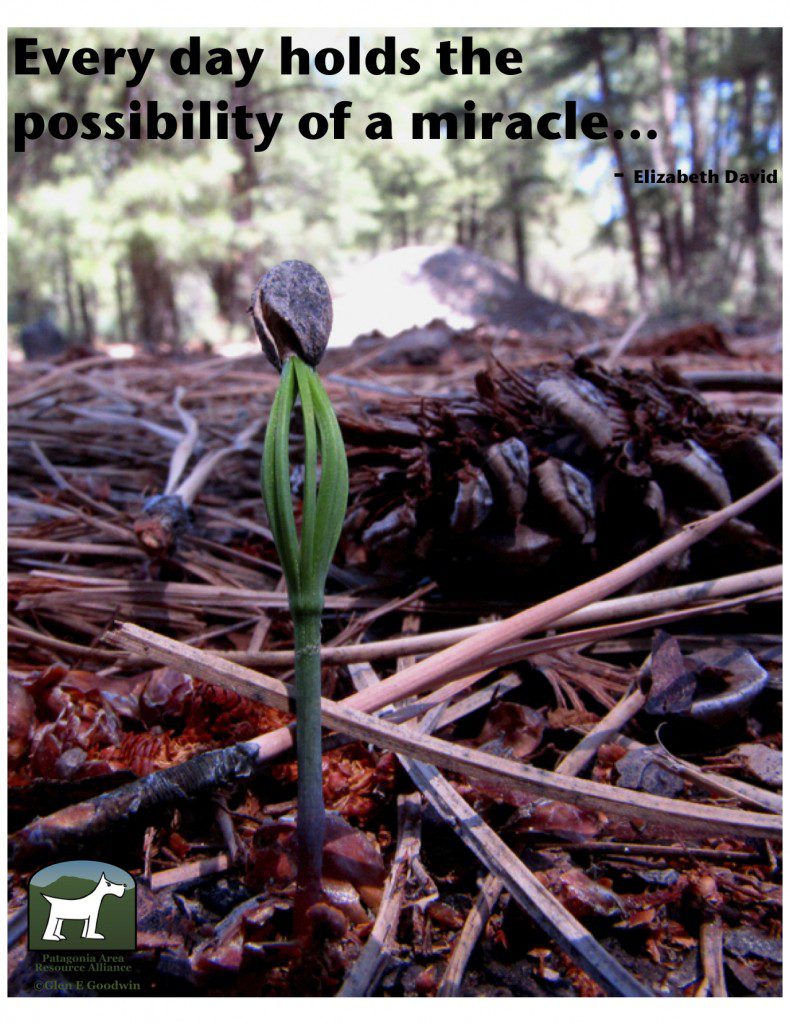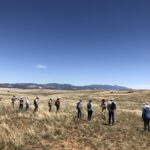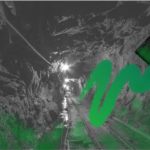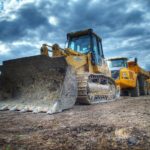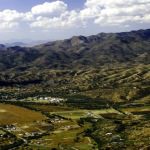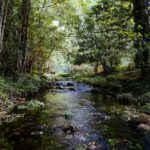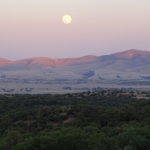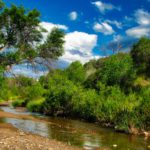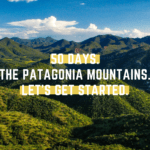
Mar 12, 2013 | Blog
The Patagonia Area Resource Alliance is working to stop industrial mining in the Patagonia Mountains. We are very concerned about protecting and preserving the town’s water supply. Part of our mission also includes promoting the local tourism-based economy to our surrounding public lands and parks. The interesting thing that I’ve discovered while working for PARA is that our mission overlaps or complements the mission of many other organizations both local and national. Given that we’re on the Mexican border, I can say international organizations too! One of those organizations that complements our work is Wildlands Network.
John Davis with Wildlands Network is hiking the Western Wildway of the continent from Mexico to Alaska to promote awareness of the need for wildlife corridors. The Western Wildway is a 6,000-mile-long wildlife corridor that includes Mexico, the United States and Canada. According to their website, “protecting the Western Wildway represents North America’s best chance to ensure the survival of many threatened keystone species that require long-distance movement pathways, including grizzly bear, lynx, mountain lion, wolves, jaguars, and ocelots — all faced with growing pressure from development-based habitat fragmentation and climate disruption.” Learn more at www.trekwest.org
John Davis recently traveled through Patagonia, Arizona. PARA got the opportunity to show him the area in the Patagonia Mountains that is being threatened by Wildcat Silver’s proposed open pit mine. Accompanied by Matt Clark from the Southwest office of Defenders of Wildlife and Sergio Avila from Sky Island Alliance, we climbed American Peak in the Patagonia Mountains. We discussed how the wildlife corridor for jaguars, ocelots, bears and mountain lions through the Patagonia Mountains would essentially be blocked by the proposed Wildcat Silver mine. At the top of the peak, we could see into Mexico. The Patagonia Mountains are only one of two sky island mountain ranges that cross the border into Mexico. Sergio Avila quoted a study that showed that our bear population in the Patagonias is more closely related to bears in Mexico than they are in the nearby Santa Rita Mountains. The bird’s-eye view from the top further demonstrated the importance of the Patagonia Mountains as a wildlife corridor and the vast area of the mountains that would be impacted by Wildcat Silver’s proposed open pit mine, tailings piles, waste rock, tailings ponds and processing plants. Open pit mining operations and wildlife corridors cannot coexist.

Sergio Avila with John Davis on American Peak.
Photo ©Glen E Goodwin
We were thankful for the opportunity to bring our mission to stop mining in the Patagonia Mountains to the attention of an international organization with a complementary mission to keep North American wildlife corridors open. There are so many good reasons to keep open pit mining out of the Patagonia Mountains. Keeping vital wildlife corridors open is another one.
Wendy Russell

Mar 4, 2013 | Blog
The Super Citizen Advocacy Workshop hosted by the Patagonia Area Resource Alliance and Sky Island Alliance was a great success! We had over 30 folks come spend a beautiful Saturday afternoon with us in Cady Hall
The afternoon started out with Wendy Russell discussing the 5 mining projects with applications for mining exploration in the Patagonia Mountains. Three of the projects are situated at the head of the watershed for the town of Patagonia. Read more here: http://www.patagoniaalliance.org/patagonia-mining-proposals/

Melanie Emerson, Executive Director of Sky Island Alliance
Next up was Melanie Emerson, Executive Director with Sky Island Alliance with an exercise for the attendees of “Why are YOU here.” Answers ranged from protecting the mountains, saving the watershed, preserving dark skies, preserving peace and quiet to finding out how to help PARA stop the mines.
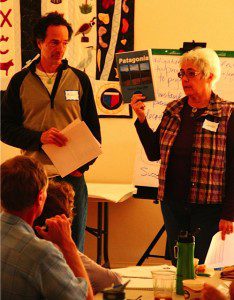
PARA Board Members Michael Stabile and Carolyn Shafer
Michael Stabile and Carolyn Shafer gave a presentation on current Patagonia directives that may be related to mining. Michael cited the new Vehicle Weight Ordinance and Watershed Policy which both help to protect the town from the extreme traffic and water usage that comes with mining. Carolyn Shafer discussed the Town Plan. The plan is very explicit when it comes to mining activity. It states as one of its goals, “Discourage mining and other activities that damage or detract from Patagonia’s environmental and scenic quality.” Read the Town Plan here.
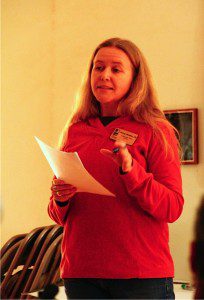
Jenny Neeley with SIA
Jenny Neeley Conservation Policy Director and Legal Counsel for Sky Island Alliance gave an overview of State and Federal Laws that affect mining on public lands. Some more familiar federal laws are the 1872 Mining Law, Clean Water Act and the Clean Air Act.
For an overview of the National Environmental Policy Act, we were very fortunate to have an expert, Dinah Bear. She had the unenviable task of condensing her 5 day course into a 30 minute discussion on NEPA. We’re all grateful for the copies of The Citizen’s Guide to NEPA that she brought. She also reminded us that you don’t have to be an expert to comment on these mining proposals.
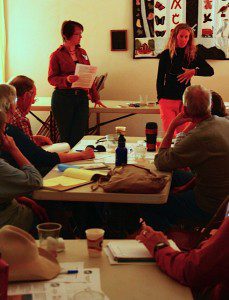
Wendy Russell & Kathi Noaker with PARA
Kathi Noaker and Wendy Russell helped to wrap up the afternoon with all of the different ways participants can spread the message about the threats to the town of Patagonia’s water, natural resources and community. We ended with many of the participants coming forward to sign on to help the PARA mission of education and outreach regarding the potential threats from mining in the Patagonia Mountains. Our super citizens of the town of Patagonia were amazing!
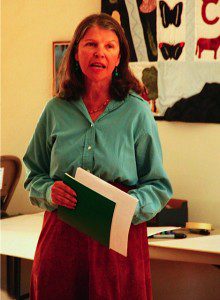
NEPA expert Dinah Bear
Thank you everyone! Special thanks to Dinah Bear, Jenny Neeley, Melanie Emerson and Patagonia® for helping to make it all possible!
Photos by Glen E Goodwin ©2013
For another view on the workshop, read “Save the Scenic Patagonia Mountains” blog by owner of the local B&B, A Room with a View. Thanks Sonia! Blog link: http://bit.ly/VKhUqu
Feb 13, 2013 | Blog
Sarah Gilman wrote a blog for High Country News titled “It helps to be irritating.” In it, she details the successes that involvement by local citizens have had in delaying the sale of leases for oil and extraction around their communities in Colorado’s North Fork Valley. Their concerns should sound familiar. “Oil and gas development could harm the area’s water and air quality and wildlife habitat, as well as its burgeoning tourism and local food economy.”
As a result, the BLM has deferred the sale of the North Fork Valley parcels. It is the second deferment as well as a reduction in the acreage offered. The blog concludes that “the local victory is a great reminder that, to effect change, especially in land management decisions, you have to be engaged and you have to be loud.”
We couldn’t agree more! PARA has been engaged in the Forest Service decision making process surrounding multiple proposed mineral explorations on Forest Service land just outside of the town of Patagonia. Our efforts, along with a lawsuit against the Forest Service with co-defenders Defenders of Wildlife and Sky Island Alliance, sent the Canadian Mining Company Wildcat Silver back to the drawing board. Wildcat Silver had received permission from the Forest Service to start exploratory drilling back in November 2011, which was then rescinded in April 2012. The further ripple effect of the lawsuit was the additional delay of exploratory drilling projects on public land by mining companies Regal Resources and Oz Exploration. Neither Oz nor Regal have received a decision yet for plans they submitted in November, 2011. The Oz project is even listed as ‘on-hold’ by the Forest Service.
Through a grant awarded from Patagonia® Inc., PARA is hosting a workshop with Sky Island Alliance to further amplify the voices of the citizens of Patagonia. Learn effective ways to be loud and irritating! Our plan is to stop the threat of mining in the Patagonia mountains. Won’t you join us?
Learn more about our Super Citizens Advocacy Workshop.
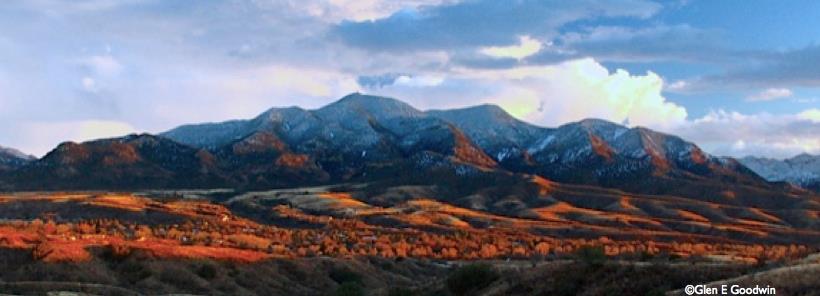
Feb 9, 2013 | Blog
The Patagonia community, PARA and SIA are gearing up to make a difference!
Visit the small town of Patagonia near Arizona’s southern border and the first thing you’ll notice is Red Mountain, the most prominent peak of the Patagonia Mountain range. Red Mountain and the rest of the mountain range contain an amazing array of native plant and wildlife species and even more extraordinary landscapes. There’s more biodiversity here than in Yellowstone National Park! The town of Patagonia, nestled at the base of the mountains, is the perfect launching off point for a wide variety of outdoor recreational activities including hiking the Arizona Trail, mountain biking, and world-class bird-watching. The community relies on this eco-tourism as well as the tourists that come to town just to enjoy our locally-owned restaurants, galleries and shops.

Unfortunately, our community and our mountains are immediately threatened by several hard rock mining proposals that would have severe and permanent impacts to this important Sky Island mountain range and the town of Patagonia. The mining claims encompass most of the Patagonia Mountains, including Red Mountain and the Arizona Trail. They even go right up to the southern edge of town. These mining proposals would destroy valuable wildlife habitat and would cut critical wildlife migration corridors. The mining activities would use vast quantities of water. We fear that they would lower the water table, reduce the water available to the town and even dry up private wells resulting in dire impacts to the vegetation, wildlife and townspeople.
In response to these threats, the Patagonia Area Resource Alliance and the community of Patagonia is working with Sky Island Alliance to advocate for the watersheds and natural and cultural resources of the Patagonia Mountains. Through a grant awarded from the Patagonia® Clothing Company, PARA and SIA are organizing training workshops to encourage Patagonia area residents to identify and collect information that highlights the extraordinary biological richness of our mountains. We will use that information to effectively advocate for the protection of this cherished mountain range.
SIA is lending us its expertise in many ways, including training Patagonia-area volunteers to play a key role in inventorying and documenting mammals, birds, bats, plants and more. SIA and PARA will also team with regional experts and other partners to conduct springs assessments, unobtrusive wildlife monitoring, and road inventories for a better understanding of our area’s resources. To utilize this information as effectively as possible, PARA will work closely with SIA throughout this project to launch a community-engaged and science-based advocacy campaign. This campaign will empower and build capacity within our community to promote the protection of the Patagonia area and halt current mining proposals.
These efforts will enable the community to effectively respond to the numerous exploratory drilling and mining proposals slated for this fragile area. It will also ensure that we are well-positioned to repel any future proposals by promoting the protection of this special place and the plants, animals and people who call Patagonia home.
The Patagonia community, PARA and SIA are gearing up to make a difference! With support from Patagonia® Inc, we will protect and preserve our exceptional Patagonia Mountains, the home to diverse wildlife and plant species, extraordinary landscapes and our community of amazing people.
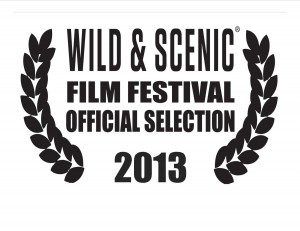
Jan 17, 2013 | Blog
 We were so proud and excited to hear that “Mining Patagonia” by Michele Gisser made it into the 2013 Wild and Scenic Film Festival! Here was our opportunity to take our story to a wider audience. We knew other towns and cities across the West were being faced with the same challenges brought on by Canadian mining companies.
We were so proud and excited to hear that “Mining Patagonia” by Michele Gisser made it into the 2013 Wild and Scenic Film Festival! Here was our opportunity to take our story to a wider audience. We knew other towns and cities across the West were being faced with the same challenges brought on by Canadian mining companies.
Gooch and I hit the road to Nevada City with plans to meet Michele and Patricia at the Festival. It was a long drive and if you do it, take scenic 395 up the eastern side of the Sierra Nevadas. Once we arrived, the Festival provided housing for us. We stayed with a couple who’ve lived in Nevada City for over 30 years. They were generous with their home and knowledge of the area.
Nevada City was a town born out of the California gold rush. There’s old mining equipment on display throughout the community. When mining went bust, the citizens re-invented their town. From the Nevada City Chamber of Commerce website: “The hippies and back-to-the landers who settled here brought new attention and commerce to a sagging downtown that was half full of empty stores. At the same time, city leaders were early in recognizing that historic preservation could be the foundation of a strong tourist trade.” The town of about 2800 residents now hosts 16 different annual events including a bicycle race, wine festival and 2 film festivals.
It didn’t take us long to find another community faced with renewed mining activity. At our first showing of “Mining Patagonia”, I was approached by the session host, Gary Parsons from the San Juan Ridge Taxpayers Association. There’s an old goldmine that wants to re-open outside of Nevada City. The last time the mine was in operation, eleven local wells went dry, including the well for the public school. The issues they face are very much the same: water, environment, economic future, land values.
The Festival also offered other opportunities for film-goers. There were workshops, art exhibits, live music and lectures happening all weekend. We attended the workshop “Measuring the Impact of Art That Acts” hosted by Orion magazine in the Activist Center. We also enjoyed live music in the street with the amplifiers being powered by petal power. There were 6 bicycles surrounding the musicians that audience members would hop on and petal to power the show. Our hostess took part in a public reading of “A Sand County Almanac” by Aldo Leopold on the steps of City Hall. We even met Flo, the salmon mascot for the South Yuba River Citizens League and hosts of the Festival.
It was a great weekend for us. We saw some amazing films. We were thrilled to get our story out to a wider audience. We received lots of great feedback and networked with other like-minded individuals and organizations. And we were extremely pleased to give audience members updates about the jaguar we have living nearby!
Click here to see photos from our trip.
Jan 7, 2013 | Blog
A recent mining headline caught our eye this week:
Apparently, all those young male miners, flush with cash, have more money to spend in the brothels. The article goes on to say that the sex workers are even making more money than the miners. One quote was $200,000 per year!
In the oil boomtown of Williston, North Dakota, strippers can make more money in one day than they could working an entire week in Las Vegas.
Rosemont Copper and Wildcat Silver like to tout that they’ll bring much needed jobs to the area and help our economy.
It’s not a big stretch to say that our current, local workforce is not trained to fill most of the mining jobs that Rosemont Copper and Wildcat Silver have to offer. The mining jobs are fairly specialized. Consequently, trained workers will have to be imported from somewhere. With the nature of the mining industry as being boom or bust, mine workers typically travel from mine to mine following the work. An extreme picture of a job boom situation is happening around Williston, North Dakota.
Along with the increase in their workforce came increases in violent crime, drug use, prostitution, domestic violence. Last year, the number of criminal incidents reported to the Williston Police Department nearly tripled.
We need to take a hard look at the complete package that the mining companies are offering to our communities. What’s best for our community in the long run? And what will be left of it after the copper and silver are gone?
Sources:
Fracking Communities—Now Add Crime to the Laundry List of Problems Drilling Brings to Your Town: http://ecowatch.org/2012/fracking-crime/
Australia’s Mining Boom Creates Demand For Sex Workers: http://www.knau.org/post/australias-mining-boom-creates-demand-sex-workers
Crime turns oil boomtown into Wild West: http://money.cnn.com/2011/10/26/pf/America_boomtown_crime/index.htm?iid=SF_PF_River
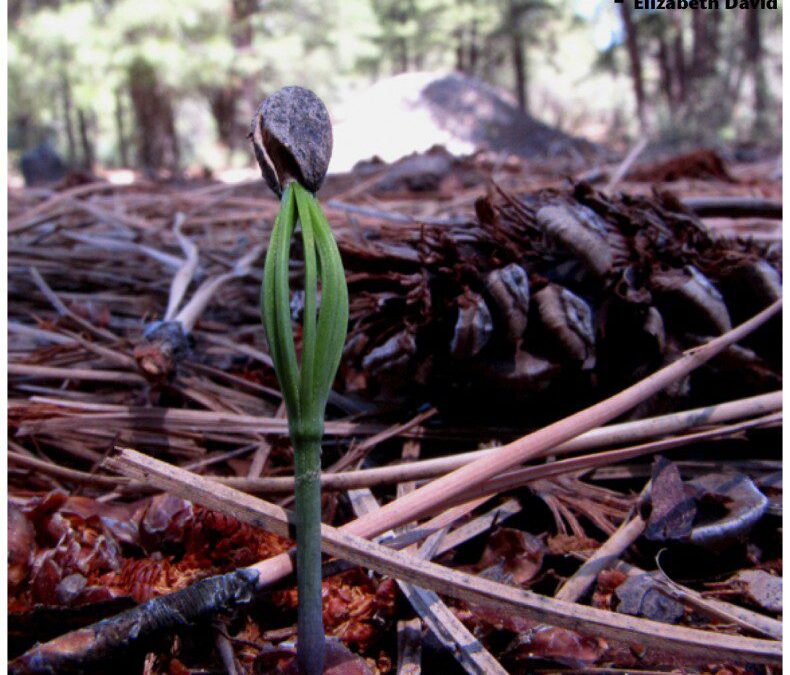
Dec 24, 2012 | Blog
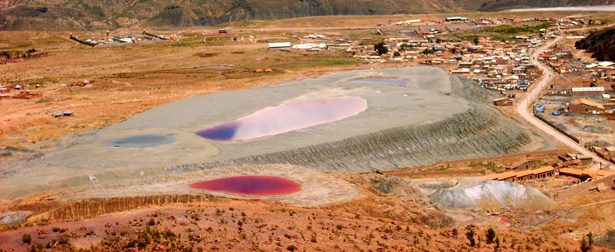
Dec 9, 2012 | Blog
Patagonia resident Sherry Luna wrote a commentary for the Patagonia Regional Times called In Support of Mining [Dec 2012]. In it, she expressed that her opinions will be ” different from most folks around here and guaranteed to be objectionable to almost everyone.” That was about the only statement in her article that we found different or objectionable!
We agree with Luna that our modern lifestyles are completely dependent upon the minerals we extract from the earth. We recognize that we would probably go back to the stone-age without copper and concur that a better way to acquire necessary minerals is needed.
We agree with Luna that “shunting mining off to other nations” is not the answer. Mining is the 3rd largest contributor to global pollution.¹ Communities around mines suffer the consequences of heavy metal contamination in the water and toxins released in the air. There are also the well-documented human rights violations to consider. Murders and rapes are not uncommon, typically inflicted by the private security forces hired by the mines.² We share the wide view that mine reform needs to happen on a global scale. We recognize that our power lies in creating the change at home. In the U.S., metal mining was found to be the top toxic polluter.³

photo by Blacksmith Institute
We agree that reform of the 1872 Mining Law is necessary and respect Luna’s idea of nationalizing mining. Currently, mine companies pay nothing for the copper, silver, gold and other hard-rock minerals that they extract off of our public land. It feels a bit like stealing to us! And we couldn’t agree more with her statement that “Private companies do not care first and foremost about protecting the environment, or whether our nation is secure or not, or whether local economies stay viable. Profit is the driving motivation.”
Thank you, Sherry Luna, for having the courage to share your views about mining. It is a much more complicated issue than just simply being for it or against it. We need a new way, a more rational process regarding how and where mining is done. Allowing foreign companies to mine U.S. minerals for free to sell to Asia doesn’t make good security or business sense to us. We also need to acknowledge our part in the demand for metals in our lifestyles. We need to kick our highly-consumeristic and disposable habits of the 21st century before there’s nothing left to consume.
Sources:
[1] Top 10 Toxic Pollution Problems, Blacksmith Institute http://worstpolluted.org/projects_reports/display/98
[2] Guatemalan Peasants Sue Canadian Mining Company Hudbay, PRI’s The World http://www.theworld.org/2012/11/guatemala-mining-hudbay/
[3] EPA: Metal Mining Industry Nation’s Top Toxic Polluter, Earthworks http://www.earthworksaction.org/media/detail/epa_metal_mining_industry_nations_top_toxic_polluter#.UMStxZPjk5Q

Dec 3, 2012 | Blog
There was an article in the Green Valley News, “Supervisor taking opposition to Rosemont to Washington” on Saturday, December 1, 2012. It states in part:
Pima County Supervisor Ray Carroll is taking his opposition to the proposed Rosemont Copper mine to Washington, D.C., where he will meet with congressional and Bureau of Land Management officials.
To us, that’s big news! Besides Rosemont Copper, Wildcat Silver has also submitted an open pit mine plan to the US Forest Service for review. Wildcat wants to create an open pit mine in the Patagonia Mountains, 6 miles upstream from the town of Patagonia. Both Rosemont and Wildcat share executive board members. Have you heard of Richard Warke yet? If not, watch the next screening of “Cyanide Beach” by John Dougherty of InvestigativeMEDIA.
Unfortunately, the fate of our area mountains will potentially be decided by people and agencies from somewhere else. We want a voice in these decisions. Thank you Ray Carroll for being that voice right now. And we will continue our utterances of opposition for as long and as loud as it takes for Washington’s decision makers to hear us too! It’s the most important work we feel we could do for the community in which we live.
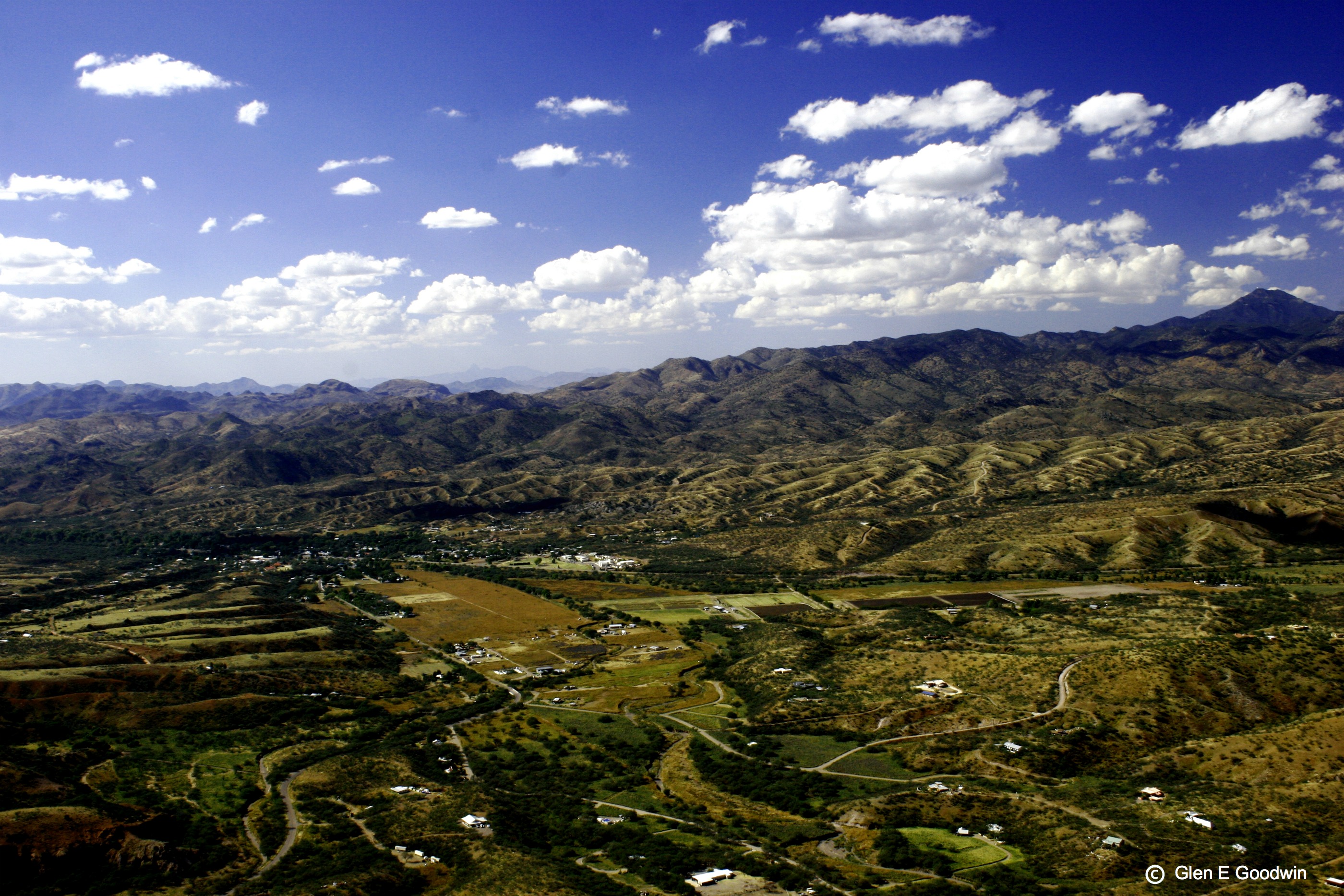
Patagonia, Arizona © Glen E Goodwin
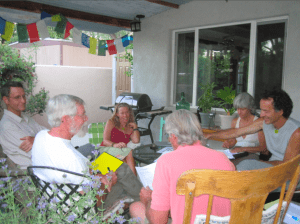
Nov 27, 2012 | Blog
Please indulge us for this reflection on gratitude. Someone recently commented that it was amazing that such a small group has accomplished so much, with such passion. It’s not just us. We have LOTS of help! For that, we thank you!

PARA World Headquarters
We cherish all the assistance we receive from organizations and individuals alike–too numerous to name! Through the threat of mining, we’ve met and gotten to know better many people who are just as passionate about the Patagonia area as we are. That was certainly something to be thankful for this holiday season.
“Gratitude makes sense of our past, brings peace for today, and creates a vision for tomorrow.” -Melody Beattie
Two of the organizations that we’ve been working with are the Defenders of Wildlife and Sky Island Alliance. Please take a moment to read about their activities in the Patagonia Mountains.
“Mining Sky Islands” by Heather Murray, Legal Fellow, Defenders of Wildlife
“Save the Patagonias (With Science!)” by Melanie Emerson, Executive Director, Sky Island Alliance.
Nov 7, 2012 | Blog
Jennifer Krill, the Executive Director of EarthWorks, has written an excellent open let to President Obama. In it she explains why reforming the antiquated Mining Law of 1872 is good for the budget, good for jobs and good for clean water. She explains that HR3446, the Fair Payment for Energy and Mineral Production on Public Lands Act, is a step in the right direction towards reform.
After 140 years under the 1872 Mining Law, we have:
- given away more than $300 billion in minerals, royalty-free,
- “sold” off public lands equivalent in size to the state of Connecticut — for no more than $5/acre, and
- taken on a $50 billion tab for abandoned mine cleanup.
HR3446, the Fair Payment for Energy and Mineral Production on Public Lands Act would:
- generate $6 billion to reduce the deficit and help clean up abandoned mines
- generate thousands of mine cleanup jobs at the more than 250,000 abandoned mines around the country (as your own administration decided during the 2009 fiscal stimulus), and
- help provide clean water — more than 40% of the headwaters of western watersheds are polluted by mining.
You can view this bill and show your support through our Relevant Legislation page.
She also explains why S1113/HR4402, the Critical Minerals Policy Act, is bad for communities and bad for the environment. Did you know that this bill considers altering the National Environmental Policy Act (NEPA) to limit public input in mine permitting? This would muffle or silence community and environmental concerns when new mines are proposed. Worse yet, the definition of “critical minerals” could be so broad that traditional hardrock minerals like copper could be considered for fast tracking the permit process.
You can oppose this bill by simply signing and sending this letter we’ve written.
Read more of the details in Jennifer’s letter HERE.
Nov 1, 2012 | Blog
Guest Blog in Response to “Mining could be key to many youths’ future” [Nogales International 10/30/2012]
Dear Editor,
After a long and thoughtful process, I feel compelled to share my own insights and opinions regarding the current mining proposals, threatening to forever alter the character and environments of our one-of-a-kind Sky Islands.
I have heard the pro-mine arguments ad-nauseum in person, in print, and in social media. Within this small-thinking circle I have narrowed the pro-mine arguments down to one basic element. Namely, that it will somehow create new jobs and thus boost the local economy. Allow me to poke a few holes in this flimsy premise.
First, let us consider that these are foreign corporations trying to come in, take our resources, scar the land, and leave – all for the benefit of mainly foreign investors. To the flag-wavers reading this, there is nothing American about these would-be sham ventures. Quite simply they will rape our native soil for the benefit of outsiders. So, from the money-making, top-end of things, forget about benefiting from this.
Second, consider that the relative handful of well-paying local jobs that might be generated by these mines would likely be mostly filled by imported labor. The carrot-at- the-end-of-the-stick theme of job creation is truly a monumental myth perpetuated by the very top-end folks who donʼt live here and who give two hoots about our land or livelihoods. Nor would the life of the mines be particularly long, resulting at best in short-term employment.
Far from creating jobs, history – repeated history – has aptly demonstrated the folly in placing our collective trust in the hands of mining executives with no greater motive than to line their pockets with even more money. Avarice that breeds destruction of the land is surely the worst kind of all.
At a recent public meeting in Patagonia I asked what I thought was a reasonable question to the local U.S. Forest Service Supervisor. I wanted to hear about an example – just one – of a reclaimed and rehabilitated open pit mine in the entire Southwest. The silence that ensued in the wake of my question was, needless to say, telling. So too were the applause that confirmed the well-warranted suspicion that other locals hold in regards to these shady mine dealings.
What then would the mines do for us? They would forever create permanent scars upon an otherwise beautiful landscape. They would diminish the biodiversity of the region tremendously by lowering air quality, depleting already scarce water resources, adding a constant clamor of unnatural noises, and by polluting the remaining scarce groundwater via toxic mine runoff. Donʼt believe me? Just look at the hard facts concerning open pit mines in the Southwest. Look at the boom and bust of Bisbee and at the incredible scars left there as well as in Clifton and Morenci. These holes and this environmental degradation would be here to stay.Consider, on the other hand, the idea of continuing to promote eco-tourism in our unique area. We are already a well-known and lucrative (for local businesses!) destination for birdwatchers and in general for Nature enthusiasts and outdoors people from all walks of life. These tourists, whether theyʼre from Phoenix or from far-flung regions come here for the beauty and biodiversity of our Sky Islands region. The money that they spend goes directly to local businesses such as hotels, bed and breakfasts, local Nature guides, restaurants , car-rental companies, and grocery stores to name a few. Held against the hollow promise of a few measly mine jobs, the benefits of NOT having the mine are staggering indeed.
The Sky Islands of Arizona are truly a biological wonder and world treasure. Here we have the most mammal and reptile species in North America, the most bee species in the world, over 4000 species of plants, 18 species of hummingbirds on record, and a plethora of “Mexican Specialty” species such as Jaguars – 3rd largest cat species in the world, Ocelots, Elegant Trogons, Brown Vine Snakes, Coatis, Javelina that occur nowhere else north of Mexico.
You get the idea: we are truly a unique eco-tourism destination that easily rivals and betters the likes of Yellowstone, the Everglades, the Redwoods. Just go and ask the people living in those areas exactly what makes their local economies tick (hmmm, could it be the natural environments??) and whether they would like a mines in their backyards to stimulate it.
Vincent Pinto
Ravens-Way Wild Journeys Nature School
Patagonia, Arizona
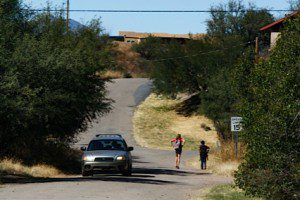
Oct 23, 2012 | Blog
We would like to question Greg Lucero’s statement that Arizona Mining Inc / Wildcat Silver will be a good neighbor. “Wildcat Silver will be a good neighbor,” [NI 10/16/2012]
Mr. Lucero is the Vice-president of Sustainability of Arizona Mining Inc / Wildcat Silver. One would think that he should know that they would be good neighbors. In fact, he has no background in mining, environmental science or ecology. He can only be guided by the companies past practices. This might be a problem. Arizona Mining Inc / Wildcat Silver has never run a mining operation before. Though their executives have all worked in the mining industry for various other companies, they have never run an operation from start to finish.
We can look at the history of their executives. Five of the executives from Arizona Mining Inc / Wildcat Silver are also on the executive board of Augusta Resources. The documentary “Cyanide Beach” brought into question the business decisions of these same executives in abandoning a mining project and leaving a small town in Sardinia, Italy with a toxic nightmare. The Patagonia Mountains are a precious resource for Santa Cruz county that must be protected, not only for their value as the watershed for the community of Patagonia but for ecological reasons as well. It would be one thing if Arizona Mining Inc / Wildcat Silver had experience operating a mine with a successful closure and reclamation of a mining project in its portfolio, but they do not. Apparently, neither do their executives.
The company does own one property here in Santa Cruz county but its corporate office is in Denver. Only Mr. Lucero lives in Santa Cruz county, the rest of management is in Denver and Vancouver, Canada.
 Arizona Mining Inc / Wildcat Silver did open a new facility in Patagonia with much fanfare and a big check to our volunteer fire department. They plan to use it to store drilling core samples. “Wildcat mining inaugurates new facility” [Weekly Bulletin 10/17/2012] We have some problems about their choice of locations. The new Arizonarizona Mining Inc / Wildcat Silver facility is located within a residential neighborhood and across the street from a school. In fact, traffic will pass by two schools to get there. It’s a route shared with children walking or biking to school with narrow streets and blind curves. Let’s hope they observe the posted speed limit of 15 mph.
Arizona Mining Inc / Wildcat Silver did open a new facility in Patagonia with much fanfare and a big check to our volunteer fire department. They plan to use it to store drilling core samples. “Wildcat mining inaugurates new facility” [Weekly Bulletin 10/17/2012] We have some problems about their choice of locations. The new Arizonarizona Mining Inc / Wildcat Silver facility is located within a residential neighborhood and across the street from a school. In fact, traffic will pass by two schools to get there. It’s a route shared with children walking or biking to school with narrow streets and blind curves. Let’s hope they observe the posted speed limit of 15 mph.
Why not store core samples on their private land near the drilling operations? Why risk the safety of the children and residents near their new facility in town? What does that tell you? Good neighbors, in name only.
Oct 19, 2012 | Blog
Guest Blog post by Nancy McCoy… In the recent Guest Opinion by Greg Lucero, “Wildcat Silver will be a good neighbor,” [NI 10/16/2012] he seemed unimpressed by the impact of tourism, especially ecotourism, on the economy of Santa Cruz County. Perhaps Mr. Lucero is not aware of these facts.
Santa Cruz County has a unique and varied ecosystem that makes it a prime location for ecotourism. The Patagonia area is an internationally known birding destination. The Arizona Trail provides hiking and biking opportunities through beautiful and diverse terrain. Our county is the home of javelinas, coatimundis, bobcats, mountain lions – maybe even a jaguar- as well as vinegaroons, scorpions, rattlesnakes, and tarantulas – wildlife that visitors aren’t going to find in many other places. In fact, Santa Cruz County is a biodiversity hotspot that harbors more plant and animal species than Yellowstone Park.
Tourism, which includes ecotourism along with the area’s many historical sites, fine vineyards, wonderful restaurants, and unique galleries and shops, is an important economic component in Santa Cruz County. Just how important is tourism to our local economy? The Arizona Office of Tourism (AOT) estimates that in 2011, the total direct spending by visitors in Santa Cruz County was over $211 million and that tourism was responsible for generating $4.4 million dollars in local taxes. AOT estimates that direct earnings from tourism were over $39 million dollars in our county last year and that 1600 Santa Cruz County residents were employed in our tourism industry. In 2009 (the last year for which AOT has statistics), Patagonia Lake State Park ranked 15th in Arizona’s Top 25 Natural Attractions, with 214,000 visitors, and the Coronado National Forest ranked 25th with 97,000 visitors. As of July 1st of this year, Patagonia Lake State Park visitors totaled 95,598.
Without a doubt, tourism is an important economic driver for our county. We need to make sure we support and promote this important Santa Cruz County industry.
Nancy McCoy
The Duquesne House Bed & Breakfast
Patagonia, AZ
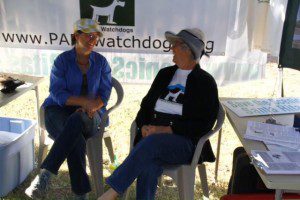
Oct 15, 2012 | Blog
The Patagonia Area Resource Alliance, along with Save the Scenic Santa Ritas, hosted a booth at the annual Patagonia Fall Festival. Thank you to our volunteers, board members and SSSR coordinator Lisa for all the work putting together and staffing our booth. We had a great time seeing our supporters and creating new ones!
One of the more memorable moments for me came when a mom and her son stopped by our booth. The mom asked where the proposed mining activity was happening in the Patagonia Mountains. I started to tell her that one of the mines was near the old Harshaw town site and the mine claims included the old cemetery as well. Her son, who was about 12 years old, opened his own wallet and made a donation to us. I was amazed to see a young person concerned enough about the future of his favorite camping places to donate his own money.
Another person who left an impression on me was a father and his four year old son. The father was excited about the recent jaguar sighting in southern Arizona and what it might mean to stop the mines from coming in. He told me that he lived in Nogales and was in the trucking industry. He drove dump trucks and knew the kind of traffic that mining would bring to the area. I expressed surprise, telling him that I thought everyone in Nogales wanted the jobs. He said, “No, we don’t want another Sierrita or Clifton/Morenci.” The politicians love to talk about the mines as if they’re the savior to our economy because of all the jobs they will supposedly provide. It was refreshing to meet someone–a potential mine employee–saying No to the mines.
Speaking of politicians, they were out in full force at the Fall Festival. We had politicians visit our booth from the county level all the way up to national. It was certainly evident that it is an election year. One of the local vendors complained that sales are always slower during election years. We certainly felt that our time at the Fall Festival was well spent! See you next year!

Oct 12, 2012 | Blog
As a non-profit organization with a pending IRS 501-c-3 application, Patagonia Area Resource Alliance (PARA) can not endorse specific candidates. PARA can ask questions of all candidates regarding their positions on issues relevant to PARA’s mission to monitor the activities of industrial developers, such as mining corporations, as well as government agencies, to make sure their actions have long-term, sustainable benefits to our public land, our watershed, and our communities.
PARA submitted questions to all candidates for Santa Cruz County Board of Supervisors – all Districts, AZ Representative District 2, AZ Senate District 2, US House District 3, and US Senate District 3. Click on the links below to view the questions and answers.
Santa Cruz County Board of Supervisors:
District 1: Manny Ruiz – CHOSE NOT TO RESPOND
District 2: Rudy Molero
Olivia Ainza-Kramer – CHOSE NOT TO RESPOND
District 3: Bruce Bracker, Lee Jones, John Maynard
Arizona State Senator District 2:
Linda Lopez, Don Woolley
Arizona State Representative District 3:
Chris Ackerley , Andrea Dalessandro, Rosanna Gabaldon
US Representative District 3:
Raul Grijalva, Blanca Guerra
Gabriela Saucedo Mercer – CHOSE NOT TO RESPOND
US Senate District 3:
Marc Victor
Richard Carmona: CHOSE NOT TO RESPOND
Jeff Flake: CHOSE NOT TO RESPOND
There is no ONE candidate who will perfectly reflect YOUR individual opinions. It is up to each of us to vote for the candidate we believe will best represent us on the issues important to us.
Oct 7, 2012 | Blog
Linda Lopez and Don Woolley are candidates for Arizona Senate District #2. Here are their positions on issues relevant to PARA’s mission to monitor the activities of industrial developers, such as mining corporations, as well as government agencies, to make sure their actions have long-term, sustainable benefits to our public land, our watershed, and our communities.
1. When considering an industry’s promise to bring jobs to our community, what other factors would you consider when deciding whether or not the overall impact of such activity would ultimately be good for the long term sustainability of our communities?
LINDA LOPEZ
Impact on the environment and quality of life for surrounding communities.
DON WOOLLEY
Very important factors are economic livelihood, the economic viability of the company, impact to quality of life, and job creation; therefore, the questions that should be asked are, how many jobs are affected by this industry/company? How are other local industries affected? How much will total wages change, and how does this change contribute to consumer demand? How much additional non-residential space will be supported? What new state and local tax revenues will be generated? What is the overall contribution of this company to the local economy? What is the impact to the “quality of life” of the residents of this community? What is the economic health of the company itself? In my mind, all of these questions must be addressed in any scenario, and quantity of our water resource.
2. As we desert dwellers are aware, water is a precious resource. What actions will you take to assure protection of the quality
LINDA LOPEZ
Any development activities including residential development must consider the long term impact on the supply and quality of water available for current activities. All proposals must undergo a thorough review by experts.
Arizona State Senator District 2
DON WOOLLEY
I certainly support the Arizona Department of Environmental Quality, which was originally conceived and implemented by the Arizona Legislature to protect the ground water quality in Arizona. We do have to be able to protect taxpayers when there is little or no benefit from greater standards that are very expensive to adopt for any treatment facility/water dept. to comply with. We must get the most “bang for the buck.” In addition, the current intrusion of the EPA on the Navajo Generating Station (Regional Haze rules) would impact Arizona’s water security (CAP), because the Navajo Generating Station provides the power for the Central Arizona Project (not to mention hundreds of job for the Navajo Nation). This is where State Sovereignty, the 10th Amendment of the US Constitution, is so vital to the State of Arizona.
As far as quantity, we are at nature’s mercy every year in Southern Arizona, whether it be Patagonia or the even hotter desert regions in Tucson, Sahuarita, and Green Valley. The Central Arizona Project (CAP) offers some capability to revitalize the aquifer in the region, and should be considered as a vital part of any new proposed water usage in the area. Again, we need to make sure that the CAP is protected, and that includes the supplier of the electricity to the CAP, which is the Navajo Generating Station. We should examine every use of water up and down the Santa Cruz and your river valley, and all current water agreements. There are other proposals in the Sahuarita/GV area such as two thousand plus houses to be built (FICO project) in lieu of the clearing of 100 year old Pecan trees near SE Green Valley area, on Continental Road. Pecan trees use 600 gallons of water per day, so the Pecan farm (FICO) is the largest user of the Santa Cruz aquifer in my area; and I just found out from a Sahuarita city councilman that the city of Tucson has the final say in Sahuarita Water’s allotment of CAP water. CAP water, and the Santa Cruz aquifer, is a big part of the argument for the detractors of the Rosemont Mine project.
3. If you support open pit mining in the Santa Rita Mountains, Canelo Hills, Patagonia Mountains, and the San Rafael Valley, what is your proposed solution for the economic bust that will happen after the mines play out in 20 years (historical track record and what current mining applicants forecast as period of operation)?
LINDA LOPEZ
Although I had been an original proponent of Rosemont Mine I have since learned of the consequences to the area both environmentally and socially as well as in the claims made by the company.
DON WOOLLEY
Although I am not in support of open pit mining as a blanket policy in the areas mentioned (this is where a careful, quantitative risk assessment is vital to the process of allowing any open pit mining), I do not accept the 20 year premise in the question. e.g. Morenci mine is still the largest producer of Copper in the country, which started in the 1800s, and began open pit mining in the 1930s. (Morenci has expansion and therefore additional jobs plans in the works) It could be the case for some operations, but they should each be examined on a case by case basis, and the final rehabilitation plans must be a key part of any open pit and other mining operations. Although not well known, there are some successful stories about open pit mine rehabilitation. The Martha Mine in New Zealand is an example of a success story, it can be done if you want to do it! And the rehabilitation work would provide jobs for years afterwards, once the mining operation is stopped. This is the 21st century, and our advances in so many areas are dramatic and bear no relationship to problems that some focus on that occurred years ago. Technology overcomes many, many obstacles, thanks to free markets and innovation. We need to turn it all loose and break the government chains that are stifling any progress in our economy.
4. What types of support do you suggest for fostering our existing economic business models such as local food production, wineries, eco-tourism, heritage tourism, etc?
LINDA LOPEZ
The state legislature through the Arizona Commerce Authority and the Arizona Tourism has the abilty to provide both direct and indirect support to these activities.
DON WOOLLEY
Ensure that all have adequate water allocations to support their Arizona Commerce Authority endeavor, examine statutes for a domestic farm winery licensing, supporting the creation of new and any existing conservancy’s and parks and natural habitats in the area, and help spread the word about the area. I have lived in Southern Arizona for 11 years, and I do not know a lot about the Patagonia area, other then the Stradling Ranch (Hubbard Museum of the West in Ruidoso, NM was my source), and I have never been there, to date; The best way to support tourism is to get the regional (LD2) and national economy back on track with GDP growth and more jobs. People need jobs to pay for vacations for their families, that is just a fact. LD2 unemployment rate is much higher then the Arizona State average and higher then the national rate (which is really measured by U6, and almost 15%).
Also, it would be great to secure the border so people would not have to worry about confronting drug smugglers in pristine areas, and here is a news flash, they absolutely don’t care about pristine areas of the US.
5. What other visions of sustainable economic activities do you have for our area?
LINDA LOPEZ
Support by the state legislature and by the federal government for the international trade opportunities at the Nogales border crossings will bring revenue to the area as well. More job opportunities will become available leading to more support of the current business community with opportunity for expanding the business community. The border MUST be seen as an asset – not a liability.
DON WOOLLEY
For the sake of the conversation I will exclude mining; some manufacturing jobs could be pursued, via tax incentives, etc., along with the service industry and tourism itself, things such as bicycling (work to get a tour event in the area), also hot-air ballooning, which is big in the Monument Valley area now; we need to look at everything, because the Port of Guaymas in Mexico is a reality now, the first container ship unloaded at the Port of Guaymas in Feb. of this year; transportation from Guaymas to the border and then to the Tucson or Benson areas, to connect with the mainline of the Union Pacific RR, is going to be critical to this new district. And passenger rail service from Nogales to Tucson to Phoenix may become a reality at some point in the future. This corridor to Guaymas opens up world markets to the area, and that includes tourists on Cruise ships that are now docking in the Port of Guaymas, Mexico, and the RR that runs from Guaymas to Hermisillo and on to Nogales.
6. Arizona Proposition 120 asserts State rights over air, water, public lands, minerals, wildlife,and other natural resources within Arizona. What is your position on this Proposition and why?
LINDA LOPEZ
I oppose Proposition 120. I voted against the referendum during session and will vote no when I cast my ballot. I do not trust our state legislature to take the necessary actions to protect these important resources.
DON WOOLLEY
First let’s look at the entirety of Paragraph C of the Proposition that will be on the ballot, which makes a big difference: The State of Arizona declares its Sovereign and exclusive authority and jurisdiction over the air, water, public lands, minerals, wildlife, and other natural resources within its boundaries, except for 1) Territory Established as Indian Reservations by the Government of the United States 2) Land of the United States, or lands that have been Ceded. In a manner prescribed by law, to the United States pursuant to Article I, Section 8, clause 17, Constitution of the United States. (( to exercise exclusive Legislation in all Cases whatsoever, over such District (not exceeding ten miles square), as may, by Cession of particular states, and the Acceptance of Congress, become the seat of the Government of the United States, and to exercise like authority over all places purchased by the consent of the Legislature of the State in which the same shall be, for the erection of Forts, Magazines, Arsenals, dock-Yards, and other needful buildings)).
Interpretation: That the proposition amends the Arizona Constitution to repeal Arizona’s disclaimer of all right and title to the public lands within the state (except Indian Reservations), and to repeal Arizona’s consent to provisions of the Enabling Act (In 1910, the United States Congress passed the Arizona- New Mexico Enabling Act, allowing Arizona to become a state. The Enabling Act also granted Arizona approximately 10.9 million acres of state trust land, subject to terms for the management, operation, use and disposition of those trust lands).
So my response to the question would be this: This is the reaction of the State legislature to the Forest Service and BLM mismanaging forest land within Arizona, and the federal governments lack of communication with state authorities; all logging has been curtailed, thinning of the forests is not being done, and, as a result, large fires in the state have destroyed thousands of acres of forest land. The Forest Service is busy closing off many roads in the National forests to re creationists, fishermen, hunters, etc. There must be communication with the states as far as the water, minerals, etc. The Feds do not communicate, they dictate, and this is the natural reaction to the on-going over-reach of the federal government. Quote, “This is not a secession or nullification Initiative, it is a re-establishment of land rights…the US Government controls 42% of Arizona’s land, and tribal reservations and lands specifically ceded to the federal government with in Arizona (e.g. National Parks) are exempt.” (LD18 committee report)
State law says that this proposition can be voted on, so let’s see what the people of Arizona say on Nov. 6th, and then in 2013 our legislature needs to make a concerted effort to communicate with the Federal agencies that are not cooperating with state governments, and there are many. (Quite frankly, this may not change unless we change administrations). In many cases, I believe the states can be better stewards of their land; there are few examples of Federal Government efficiencies in most things that they do, I don’t have to name them here, I am sure you all know what I am talking about. And it stops any further encroachment by the federal government.
As a non-profit organization with a pending IRS 501-c-3 application, Patagonia Area Resource Alliance (PARA) can not endorse specific candidates. PARA can ask questions of all candidates regarding their positions on issues relevant to PARA’s mission.
Oct 7, 2012 | Blog
Marc Victor is the Libertarian candidate for US Senate. Here are his positions on issues relevant to PARA’s mission to monitor the activities of industrial developers, such as mining corporations, as well as government agencies, to make sure their actions have long-term, sustainable benefits to our public land, our watershed, and our communities. He chose to sum up his answers to all the questions in a few paragraphs. We’ve listed the questions followed by his answers.
1. When considering an industry’s promise to bring jobs to our community, what other factors would you consider when deciding whether or not the overall impact of such activity would ultimately be good for the long term sustainability of our communities?
2. As we desert dwellers are aware, water is a precious resource. What actions will you take to assure protection of the quality
3. If you support open pit mining in the Santa Rita Mountains, Canelo Hills, Patagonia Mountains, and the San Rafael Valley, what is your proposed solution for the economic bust that will happen after the mines play out in 20 years (historical track record and what current mining applicants forecast as period of operation)?
4. What types of support do you suggest for fostering our existing economic business models such as local food production, wineries, eco-tourism, heritage tourism, etc?
5. Thomas Jefferson said : “I am not an advocate for frequent changes in laws and constitutions, but laws and institutions must go hand in hand with the progress of the human mind. As that becomes more developed, more enlightened, as new discoveries are made, new truths discovered and manners and opinions change, with the change of circumstances, institutions must advance also to keep pace with the times. ”
The Mining Law of 1872 was enacted to develop this part of the country and at the time mining used dramatically different extraction methods than today’s industry. What will you do to either outright cancel this law OR in the alternative, bring it to modern times and empower local communities to have control over their resources?
6. HR 3446, the “Fair Payment for Energy and Mineral Production on Public Lands Act” will require mining companies to pay a royalty, provide safeguards for clean water, and give communities and agencies a say about where mining will be permitted. What will you do to support this House bill or its Senate version?
7. What other visions of sustainable economic activities do you have for our area?
Marc Victor’s answers:
My firm belief is that government and industry are too closely tied together, creating legislation for mutual benefit at the expense of consumers, fair competition and a free market.
As a Libertarian, my fundamental belief is that people and communities should engage in activity voluntarily. Parallel to that is the belief that no action undertaken should result in the harm of another person or their property.
When we talk about issues, like the mining industry, these principles should be the basis for making any decision. Mining should be conducted in a manner that is safe for the workers, safe for the residents, and insures that any harmful by-products do not contaminate shared resources like air and water. Private property and trespass laws are the legal key for making sure such damage does not occur and that mining companies are held accountable for remedying the situation if it should.
To the questions about the local economy, business models and the forecasted decline of industry as a particular mine plays out, diverse free markets are the best insurance for a robust economy. Businesses come and go. Industry comes and goes. As technology changes, certain products or services become less desirable in favor of new products and services. To artificially prop up or bail out any business or industry when the consumer and the market no longer want it is, I believe, blatant theft of taxpayer money. You have an advantage of knowing approximately when the mining activity will decline. In my view, members of the local community should be responsible for creating vibrant and competitive local businesses and for planning to accommodate the increase and decrease in the local economy. What I can do to support that is to advocate for the least amount of government intervention and to repeal laws that increase the barriers to or the cost of doing business.
As a non-profit organization with a pending IRS 501-c-3 application, Patagonia Area Resource Alliance (PARA) can not endorse specific candidates. PARA can ask questions of all candidates regarding their positions on issues relevant to PARA’s mission.
Oct 7, 2012 | Blog
Rudy Molera is running for a Board of Supervisor’s seat for Santa Cruz County District #2. Here are his positions on issues relevant to PARA’s mission to monitor the activities of industrial developers, such as mining corporations, as well as government agencies, to make sure their actions have long-term, sustainable benefits to our public land, our watershed, and our communities.
1. When considering an industry’s promise to bring jobs to our community, what other factors would you consider when deciding whether or not the overall impact of such activity would ultimately be good for the long term sustainability of our communities?
“The first and most critical question is whether this is a reputable company with a good reputation. We need to perform good research on the company as to what kind of overall impacts they have had in small communities such as ours. Did they consider protecting the environment and the long term effects of their project?”
2. As we desert dwellers are aware, water is a precious resource. What actions will you take to assure protection of the quality and quantity of our water resource?
“It is our responsibility to maintain and preserve our precious resources. Water is a precious resource that we need to preserve at all costs. The other issue when considering mining and the use of water is protection against contamination of our precious reservoirs. We can make sure this company is following the proper protocols in order to assure our resources are preserved and protected.”
3. If you support open pit mining in the Santa Rita Mountains, Canelo Hills, Patagonia Mountains, and the San Rafael Valley, what is your proposed solution for the economic bust that will happen after the mines play out in 20 years (historical track record and what current mining applicants forecast as period of operation)? See following answer.
4. If you do not support open pit mining in the Santa Rita Mountains, Canelo Hills, Patagonia Mountains, and the San Rafael Valley, what types of support do you suggest for fostering our existing economic business models such as local food production, wineries, eco- tourism, heritage tourism, etc?
“We are currently working on a collaborated economic development effort that includes public, private, and non-profits in order to make our community more inviting for future development. We need to first of all work in a collaborated effort towards a master plan for Santa Cruz County. Secondly, we need to think outside the box and promote our beautiful county. This effort should include tourism, new industry, fully develop current industry, and has to be a united effort.”
5. What other visions of sustainable economic activities do you have for our area?
“Our current effort includes two goals. These two goals are to define our foundation as a community, and to have an annual summit to promote our community. The summit is called The Supply Chain Capital and scheduled for November 9th the Americana Hotel. For more information, feel free to contact me at 520-455-7159.”
As a non-profit organization with a pending IRS 501-c-3 application, Patagonia Area Resource Alliance (PARA) can not endorse specific candidates. PARA can ask questions of all candidates regarding their positions on issues relevant to PARA’s mission.
Oct 7, 2012 | Blog
Bruce Bracker, Lee Jones and John Maynard are running for a Board of Supervisor’s seat for Santa Cruz County District #3. Here are their positions on issues relevant to PARA’s mission to monitor the activities of industrial developers, such as mining corporations, as well as government agencies, to make sure their actions have long-term, sustainable benefits to our public land, our watershed, and our communities.
1. When considering an industry’s promise to bring jobs to our community, what other factors would you consider when deciding whether or not the overall impact of such activity would ultimately be good for the long term sustainability of our communities?
BRUCE BRACKER
All development in a community should respect the environment and meet all federal and state guidelines. We would prefer low impact industries that can create and sustain jobs. We also need to be aware of legislation that can have an adverse effect on our communities, such as the new FEMA mapping of Santa Cruz County. This will continue to impact us negatively for years and the incumbent supervisor handled its implementation very poorly.
LEE JONES
A. Hold true to my principals and not allow my decision to be swayed by special interest.
B. I would order a study to be done before any industry is allowed to commence to consider the over all impact of the industries investment into the county economically as a percentage of the over all county economy vs. the ecological cost based on factual data of comparable operations elsewhere over the: 1. initial exploration / permitting process, 2. production stages, 3. end of production and closing of operations (a 25 to 50 year span) The study would consider alternative land uses and the potential income of these alternative economic models verses the industries proposed usage.
JOHN MAYNARD
How we settle this county, I believe, will be our greatest legacy to the next generation. One of the most important functions of a County Supervisor is land use. I have written 2 comprehensive plans; one for our county and approved a third comprehensive plan while in office. I did not support the comp plan amendments proposed by out of county developers for Tubac 4 years ago. When making land use decisions, there are several factors I look at carefully. They come from my background as a landscape architect and others from my belief in the values of permaculture.
Jobs are always important; people need to feed their families. It comes down to a very basic premise that if one cannot eat they cannot survive and they are forced to move on to find food. At first, the promise to create jobs for a community can be very alluring. There is something, I believe, more important and that is sustainability. Does the proposed land use support future generations and their need to feed their families? That question should be asked. It opens up the impacts a proposed land use will have upon both the natural environment (air, water and earth) and the man made environment (streets, schools, drinking water, sewer, landfill and any other public services a town or county provides). As we know, there are always impacts, it is simply determining their extent and if there are negative ones, can we implement mitigation measures to minimize them. Now you are beginning to drill down into the actual design of a site and this is where permaculture principals should be applied.
2. As we desert dwellers are aware, water is a precious resource. What actions will you take to assure protection of the quality and quantity of our water resource?
BRUCE BRACKER
Every effort must be made to protect water resources. It is the most precious resource that we have in the South West. As for specific actions this is not my area of expertise. However my platform states that we need to “make use of the knowledge, experience and expertise of our Santa Cruz County residents” and if elected I plan to follow through with that commitment, and reach out to members of our community that have knowledge and expertise on water issues.
LEE JONES
Patagonia Lake is leaking, Pena Blanca Lake had to be drained and cleaned out because of old mine activity. Arivaca Lake almost dries up every year and has mine contamination problems as well. The Santa Cruz River is pumped heavily where it drops down into Mexico and is threatened by the potential bursting of the International Outfall Interceptor Sewer Main from Mexico. We superfund clean up sites in the county from industrial contamination being dumped down the drain and creating a chemical plume near Meadow Hills water wells. We can not ignore any of these crucial water issues. Sustainability of or water supply is paramount to continued economic growth. It is the job of government to protect our water supply. As your supervisor I will work to deal with these issues proactively.
1. Working with and supporting local groups concerned with our water supply. 2. Lobbying the federal government to make sure they understand what the residents want and insure that special interest do not determine the fate of federal lands which directly effect our water supply.
3. Do what ever it takes to insure that the International Outfall Interceptor is dealt with before we have a disaster of 12 million gallons a day of raw sewerage running through the Nogales wash and down the Santa Cruz River to Tubac.
4. Insure that the water quality coming out of the water treatment plants meets standard as we replenish our aquifers with this water. 5. Limit growth as necessary to insure that the aquifers are maintained at sustainable levels.
JOHN MAYNARD
In Arizona, the passage of the Groundwater Protection Act in the late 1980’s gave the AZ State Government control of most groundwater in Arizona. One reason this was done is that counties did not have the financial resources to adequately do this nor were they performing this function uniformly around the state. Through this legislation, the Dept of Env Quality (DEQ) was charged with protection of groundwater quality and the Dept of Water Resources (DWR) was given control of groundwater quantity. County Supervisor’s role in groundwater protection was limited by this legislation. The Santa Cruz River Valley was designated a Groundwater Active Management Area (AMA) in the early 1990’s. Unfortunately, it did not include Patagonia, nor its water shed, which both drain into the Santa Cruz basin. Should we expand the AMA to cover more of our county? Let’s look at what protection it offers this resource first. Inside an AMA a developer of land has to secure a 100 year water certificate from AZ DWR, outside an AMA he does not. When rezoning land inside an AMA, we ask the developer to comply with state law. Outside an AMA, we cannot turn down a rezoning request if there is no available groundwater, but we do require the developer to state on his subdivision plat that he “does not quarantine the provision of groundwater.” In other words, buyers beware. Santa Cruz County has recently passed a “Green Building Code” and Water Harvesting Guidelines, both of which we should encourage.
3. If you support open pit mining in the Santa Rita Mountains, Canelo Hills, Patagonia Mountains, and the San Rafael Valley, what is your proposed solution for the economic bust that will happen after the mines play out in 20 years (historical track record and what current mining applicants forecast as period of operation)?
BRUCE BRACKER
I do not support open pit mining in the Santa Rita Mountains, Canelo Hills, Patagonia Mountains, and the San Rafael Valley.
LEE JONES
I don’t necessarily believe there would be an economic bust. Mining is all around us in AZ and not all of the communities around the mines are busted. It is a fact that the mine operation over the 20 years could boost the local economy. If income from this operation could be invested wisely then that income could be just the thing we need. But could we trust the mine to follow all regulations thru the very end? Am unexpected event or accident could occur even if all of the proper procedures are followed. The problem is: potential negative cost to our environment as measured against other economic models. We don’t need another Superfund clean up in our county.
JOHN MAYNARD
I lived in a mining town and I know first hand what the long term impacts are upon a community. I do not support open pit mining and I have “put my money where my mouth is” by contributing to both PARA and SSSR.
4. If you do not support open pit mining in the Santa Rita Mountains, Canelo Hills, Patagonia Mountains, and the San Rafael Valley, what types of support do you suggest for fostering our existing economic business models such as local food production, wineries, eco- tourism, heritage tourism, etc?
BRUCE BRACKER
At this time the county does not have a plan to support or coordinate tourism. We need to bring all the regions of our county together to develop a plan. We could also look at other regions in the state that have similar industry sectors such as the Verde Valley Wine Consortium and see how they have approached their rural economic development challenges and opportunities and work with them to gain best practices.”
LEE JONES
1. Keep the cost local food production low by providing special property tax assessments for farmed land, this is to including small operations as well as large commercial operations that provide jobs such as the green houses by Amado AZ. 2. Wineries, Eco Tourism, Birding & Heritage tourism permitting cost could be donated back as in kind donations to non – profit events. 3. Work to have Recognition and Declaration of special areas in the county as a special habitat or usage areas to attract tourist. 4. Help to promote these industries at the county level.
JOHN MAYNARD
Supporting local and or regional food producers, as often as possible, is a start. The model my wife and I have been following is buying Arizona grown foods. I also believe there are opportunities to engage the University of Arizona, USDA and other organizations like the NRCD to hold a series of workshops to help educate those who want to grow, produce and buy local foods.
5. What other visions of sustainable economic activities do you have for our area?
BRUCE BRACKER
I believe that it is important to support the existing industries and businesses in our communities and create an environment that they can flourish in. In a county as small as ours we need to work together to foster the type of growth that we want. In the Eastern part of the county it is about tourism related industries and businesses. It is not about my vision for “our” area; these questions are answered by the communities and the people in the areas. The County needs to be at the table when these plans are developed and implemented. I feel that is important to have these plans in place if we expect to grow the way we want to. I plan to have an active role in facilitating and developing a plan that is unique to the east county. It should connect the area business to the Arizona Commerce Authority, regional economic development organizations and other initiatives including local foods movement initiatives.
LEE JONES
Because of our location tourism and international trade should be promoted. To attract new businesses tax incentives should be provided to new tax income generating business. Health care and education have both been proven as thriving business opportunities located on the international border with Mexico; we should actively recruit in these areas.
Retirement is an industry we need to promote. We have art and cultural diversity as well as the climate and physical beauty of the area to attract retirees the fastest growing segment of the US population.
Provide the leadership to organize the people, organizations, local governments and stakeholders to speak with a united voice and lobby the state and federal government. Public relations need to be provided in the interest of promoting the positives of the border county. Tourist and retirees and our southern neighbors can and will inject millions of dollars into our local economy and we can once again have a thriving bustling community. Tourism and international trade and retirement living are our biggest opportunities. The County Comprehensive Plan is due to be updated a five, ten and twenty year plan needs to be developed to provide a road map promoting these tourist and retiree opportunities.
JOHN MAYNARD
As I said in the first question, our greatest legacy will be how we settle our county and how the next generation is able to live here. It is imperative economic activities do not negatively impact our future generations’ ability to live healthy lives in.
I believe having access to reliable and high speed internet will allow residents to run businesses and work out of their homes. Recognizing rural America was at an economic disadvantage to urban America, I met with several other rural county Supervisors from around the nation at a National Association of Counties (NACO) conference. We started lobbying Congress for funding to make high speed internet service available to rural America. Through lobbying efforts of NACO’s Rural Action Caucus (RAC), Arizona received about $58 million to connect the 12 rural counties to internet service comparable to Phoenix’s quality and speed. The infrastructure is now under construction. It should be up and running in Santa Cruz County within 1 year. It will be used first by emergency responders; next schools will be connected (distant learning) and then the county library system. Finally, small businesses and residences will find bandwidth available for their use. This will have a dramatic impact upon our county’s economic development efforts.
As a non-profit organization with a pending IRS 501-c-3 application, Patagonia Area Resource Alliance (PARA) can not endorse specific candidates. PARA can ask questions of all candidates regarding their positions on issues relevant to PARA’s mission.












 We were so proud and excited to hear that “Mining Patagonia” by Michele Gisser made it into the
We were so proud and excited to hear that “Mining Patagonia” by Michele Gisser made it into the 
